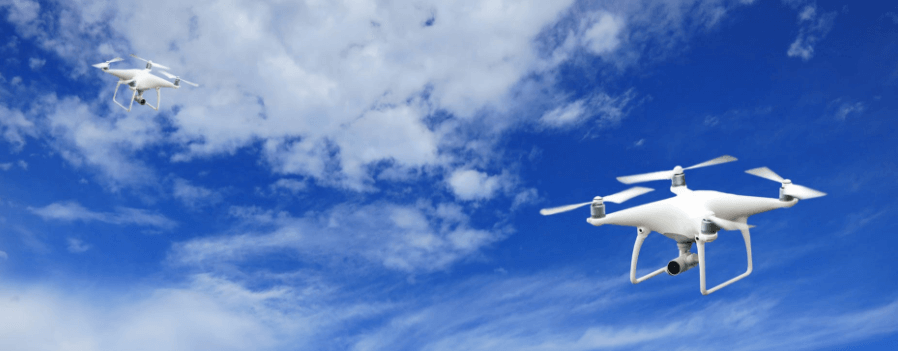
Did you know that Drones are now going to help Railways to manage the crowd and maintain security across the globe?
In 1970’s, UAVs (Unmanned Aerial Vehicles) or RPAS (Remotely Piloted Aerial Systems) now popularly known as Drones, were used strictly by military personnel of countries majorly in a war-like situation or by Governments to safeguard their borders with constant monitoring and vigilance. But with the advent of a new wave of Drone innovations, its usage has diversified from strict military purpose to monitoring security; supervise aerial maintenance work across various railway zones, and also crowd management in railway stations!
The Drones used by railways have high-quality cameras with which one can get high-resolution images from a birds-eye perspective, giving you the facility to identify any potentially hazardous areas in such a manner that ground level cameras cannot accomplish. These drones can record videos and images, and store them, which can later be scrutinized by authorities to help identify culprits.
1. In the Royal Kingdom
Even the United Kingdom (UK) has jumped into this bandwagon of using drones for its railway network. In 2014, UK witnessed heavy winter storms which caused unprecedented damage to infrastructure in the South Coast of UK including its railway networks. Network Rail (the owner and infrastructure manager of most of the rail network in England, Scotland, and Wales) also took help of Drones to oversee the rebuilding of the sea-wall in Dawlish, Devon which was intensively destroyed by the storms in the UK.
2. The Dutch
Usage of Drones in railways is also found in the Netherlands where ProRail – a government organization – looks after the maintenance of railway network and related infrastructure, utilizes Drones fitted with infrared sensors to scrutinize the switch point heating systems on its railway tracks. Using the high-resolution images snapped by these Drones, ProRail is able to see whether the switch point heating systems are operating efficiently. This is a huge security advantage as checking the switch points manually demands railway laborers to check it which posed a great deal of danger to its employees.
3. The Germans
In Germany, Deutsche Bahn, which is unarguably Europe’s largest rail infrastructure operator, began using drones in an attempt to combat and discourage graffiti-spraying gangs in 2013.
Drones used by railways are usually a meter wide and have the potential to fly for up to 80 minutes at a reasonable speed of 33 mph. They can either operate independently or be remotely controlled by a human operator. They are ideal for monitoring security as its motors emit insignificant noise! Maintaining security and crowd management burden the railways with heavy costs which can now be curtailed with their introduction.
4. For the Superpowerful
Even in the USA, Union Pacific Railroad and Central Pacific Railroad are considering using Drones to improve the efficiency of maintenance on the railway network. Israel too is contemplating to employ them to ensure extra security and surveillance especially after the Israel riots in Israel in 2013 vandalizing and damaging railway lines, trains, and stations.
From the above, it can be inferred that Drones have become a part of technically advanced security purposes in almost all parts of the world.
With an advanced future, it won’t be a surprise to see even more flying eyes circling over us, assuring our security in the upcoming time and beyond.